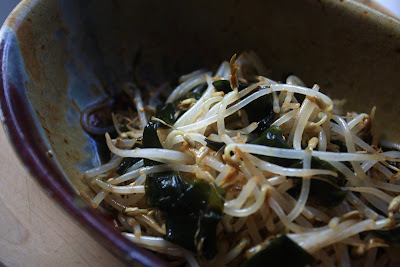 After the cold fronts a few weeks ago in Louisiana, all of our lemons and kumquat fruits were miserably ruined. Also many of our plants had seriously damaged. It is sad to see that the garden lost many colors.
After the cold fronts a few weeks ago in Louisiana, all of our lemons and kumquat fruits were miserably ruined. Also many of our plants had seriously damaged. It is sad to see that the garden lost many colors.A variety of bright colors always give me energy. So everyday I try to have colorful food items as many as possible. Of course, they must be no artificial.
I love the vivid colors of bell peppers. Their various colors, such as red, yellow and orange, make me very happy. Also I enjoy their delicious flavors and healthy benefits. Indeed, they are an excellent source of vitamins A and C.
Our garden looks dead at a glance. But if you take a careful look, there are a lot of small buds, which are almost ready to come out.
These days I often make this dish while dreaming of coming spring.
 Ingredients:
Ingredients:4 bell peppers
2-3 cloves of garlic
3-4 tablespoons of organic balsamic vinegar
4-5 tablespoons of extra virgin olive oil
Directions:
1. Preheat the oven to 400 F degrees. Place the red bell peppers on the oven pan and roast them until the peppers become tender and the skins turn blackened.
Or place them on the barbecue grill for 15 to 20 minutes until the peppers become tender and their skins become blackened.
2. Remove the peppers from the oven or grill and transfer to a glass bowl. Cover it with a plastic wrap and let them cool for 20 to 30 minutes (or leave the bowl cover with plastic wrap and put it in the refrigerator for 20 to 30 minutes or overnight.).
3. Transfer the peppers into a serving plate. Peel the skins and remove the seeds on the pan so that the delicious juice would not be wasted. Cut them into stripes. Place them on the serving plate.
4. Add the sliced garlic, vinegar and extra virgin olive oil. Chill in the refrigerator for a few hours to several hours. Serve at room temperature.






